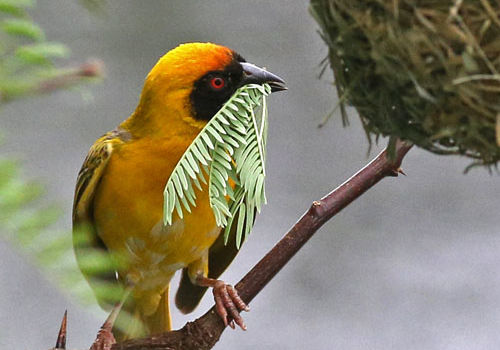
Southern masked weaver
Ploceus velatusSouthern masked weaver
Introduction: Southern masked-weavers (Ploceus velatus) are common in Namibia, even though they are dependant on water in the drier regions of the country. Riverine thicket, mopane savannah, forest savannah and woodland are amongst their favoured habitats. A gregarious species, small to large flocks occur and when they are not breeding, will join sparrows, widows, bishops and canaries; all granivorous species.
Distribution: Found throughout Namibia less for the treeless areas of the Namib Desert.
Diet: Forages in small flocks for seeds from the ground and grass stems. Also takes insects from the bark and leaves of trees. Insects eaten include mayflies, termites, beetles and caterpillars.
Description: Velatus is a Latin word for 'masked' referring to the black face and throat colouration which ends in a point on the chest. Yellow nape and crown, remainder of upper parts yellowish green.
Breeding: Usually 2 to 4 eggs are laid September to April in a kidney-shaped nest built by the male and made from grass, palm leaves and reed leaves. Incubation is for around 14 days.
Size: 15cm.
Weight: 35g.
Klein Windhoek

